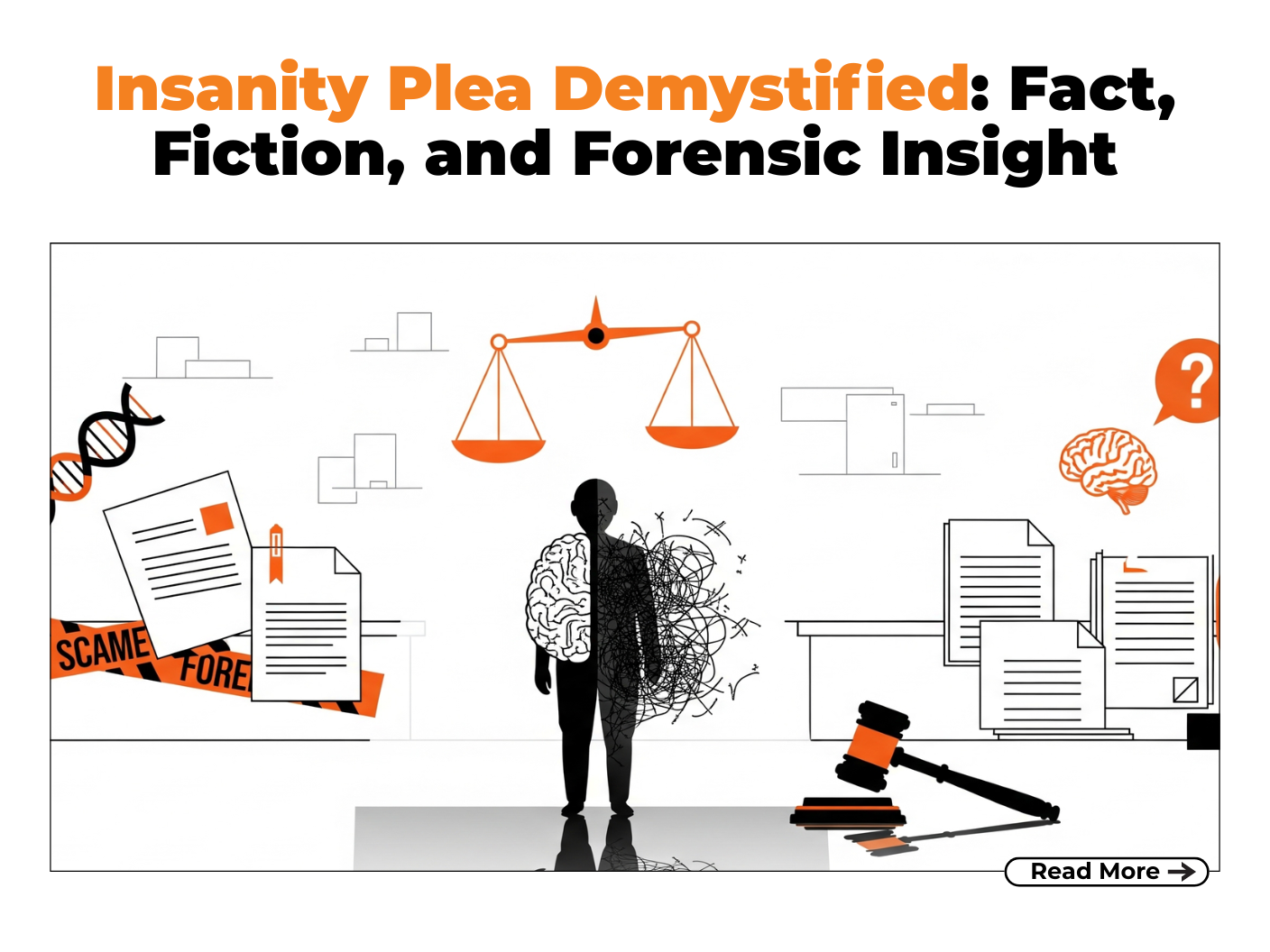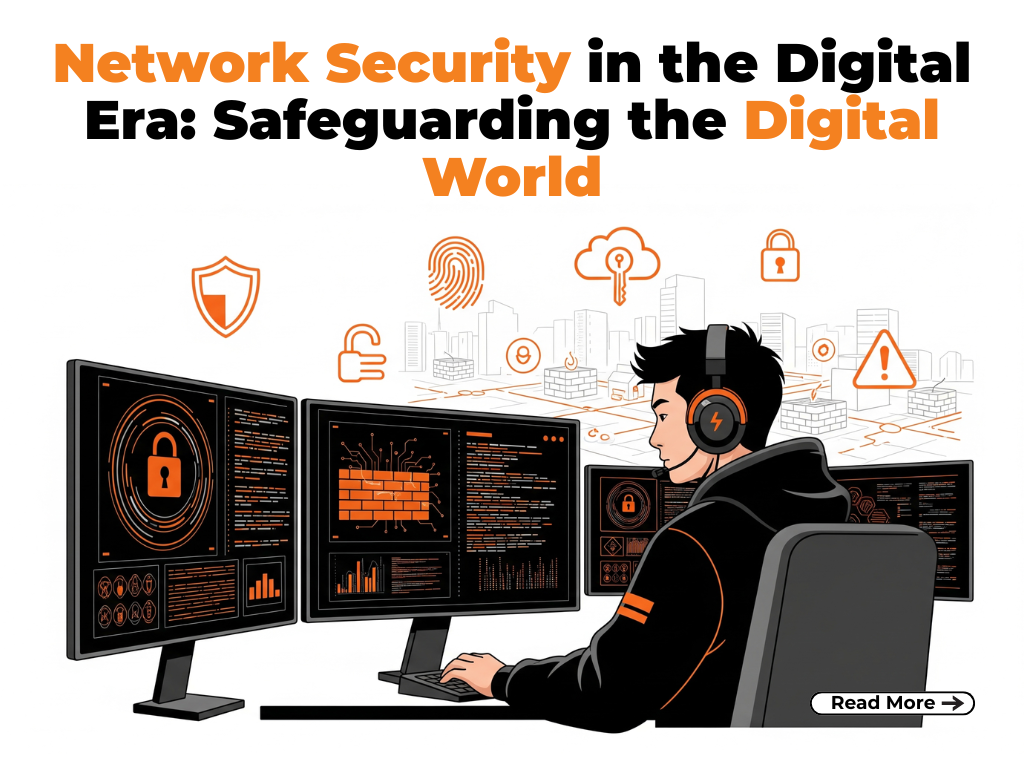The concept of the Insanity Defense is an important legal safeguard that intersects mental illness and crime, ensuring that justice considers the mental state of the accused at the time of the offense.

The Insanity Plea is also known as the
Insanity Defence.In criminal trials it is
legally used where accused claims that
they were not aware and responsible for
their actions at the time of crime due to
severe mental illness.
Now what does Demystified mean here? Demystified = to make something clearer
and easy to understand.
So, Insanity Plea Demystified is the
process of breaking down of complex legal
concept into simpler and understandable
form by removing the myths and
confusions.
Legal tools used to prove insanity:
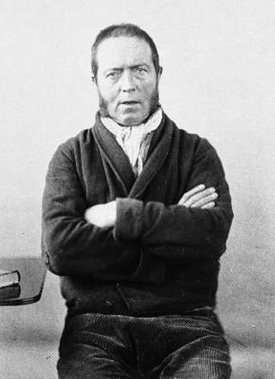
1.M’Naghten Rule – This rule originated from Daniel M’Naghten, a British man who shot and killed the Prime Minister’s secretary in 1843. The court found he was mentally ill, leading to the establishment of this rule. According to this rule the person is not criminally responsible if he/she did not know what they are doing or did not know what they were doing was wrong.
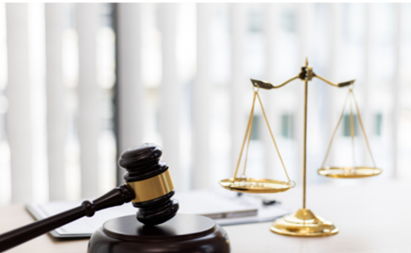
2.Model Penal Code (ALI) – This test was developed by American Law of Institute (ALI) in 1962. According to this test, the person is not criminally responsible if he/she lacked substantial capacity to appreciate the criminality of their actions or lacked substantial capacity to conform their conduct to the requirements of the law.
The irresistible impulse test also plays a role in jurisdictions that consider not just cognitive awareness but also the inability to resist the criminal behavior due to mental illness.
In the context of Forensic Psychology and Law, professionals assess the accused’s state of mind and provide critical insights to the courts, especially in complex cases involving legal insanity explained.
Myths and Facts
The insanity plea is often surrounded by misinformation, especially in the media and public discourse.
Myths
- People fake insanity to escape jail.
- If someone is found not guilty by reason of insanity, they go free.
- It’s a common defence.
Facts
- Insanity pleas are rare and difficult to prove.
- Most are committed to psychiatric hospitals—often for longer than a prison sentence.
- Less than 1% of felony cases use it—and only a fraction succeeds.
Forensic Insights:
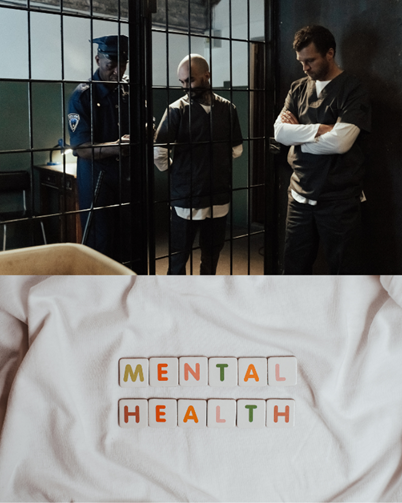
| To determine legal insanity, a forensic psychologist must look deeper into the mental state of the accused during the act—not just current symptoms.
A forensic psychologist plays an important role in insanity plea as they evaluate whether the accused was suffering from a mental illness that impaired their ability to understand the nature of the crime. They conduct various psychological assessments, review medical and legal histories, detect malingering etc. Findings of the forensic psychologist are compiled into a formal report and presented in court through expert testimony, helping judges and juries understand complex psychological concepts and ensuring that justice balances both legal accountability and mental health realities. ⚖️ Important Notes:
🔹 Famous Cases and Their Impact
These famous insanity plea cases changed how courts approach the balance between responsibility and psychological impairment.
🔹 Ethical and Legal Dilemmas
🔹 What Happens After the Plea?
Conclusion:The insanity plea is not a “get out of jail free” card, but a legal and psychological safeguard to ensure that those who truly lack understanding of their actions are treated, not just punished. Forensic psychologists play a crucial role in uncovering the truth—objectively, ethically, and with scientific rigor Summary:The blog explores the complex and often misunderstood concept of the insanity plea in criminal law. While popular media often paints it as a loophole used by criminals to escape punishment, the truth is far more nuanced. The post clarifies the legal foundations of the insanity defense, including standards like the M’Naghten Rule and Model Penal Code, and distinguishes between legal insanity and mental illness. It highlights the crucial role of forensic psychologists in evaluating a defendant’s mental state at the time of the crime, assessing competency to stand trial, and presenting objective findings in court. The blog also addresses common myths—such as the idea that it’s a frequent or easy defense—and provides data to show how rare and difficult it actually is to prove. Through real-life cases, ethical dilemmas, and a breakdown of what happens after a successful plea (often years in psychiatric institutions, not freedom), the blog offers an informed, balanced view. Ultimately, it emphasizes that the insanity plea is not about letting offenders go, but ensuring that justice is served with a recognition of genuine mental incapacity. 📝 Key Points:
⬇️ Crime is Committed ⬇️ Defense Raises Insanity Plea ⬇️ Court Orders Psychological Evaluation ⬇️ Forensic Psychologist Assesses: ▸ Mental state at time of offense (MSO) ▸ Current mental competency ⬇️ Expert Report Submitted ⬇️ Court Reviews Findings + Testimony ⬇️ Jury/Judge Determines: ▸ Was the defendant legally insane? ⬇️ ┌───────────────┬────────────────┐ │ │ │ ▼ ▼ ▼ Verdict: Verdict: Verdict: Guilty Not Guilty by Guilty but Mentally Ill (Normal Trial) Reason of Insanity │ │ │ ▼ ▼ ▼ Prison Psychiatric Hospital Split sentencing Term (indefinite, with (treatment + prison) periodic review) |

